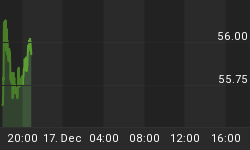If you think the bloodbath is over for natural gas stocks, think again...
Despite falling 50% over the past year, many natural gas stocks are about to enter another major decline.
And if you know what's going on here, you can use this coming decline to make huge capital gains over the next 12 months.
The key idea in this coming trade is something called "reserve write downs." It will cause billions of dollars of market valuation to vanish... overnight. Some very well-known energy firms (that you might own) will suffer huge share price declines.
Here's how it's going to work...
A resource estimate is a geologic "best guess" of how much of a commodity exists within a particular deposit, be it ounces of gold, barrels of oil, or cubic feet of natural gas. A geologist takes information about the deposit's size and grade from drilling results... and then creates a statistical model of the deposit. From that model, he or she can estimate the size of the resource.
However, the amount in the ground is not the amount that can be produced. That's where the reserve estimate comes in. Reserves are a whittled-down subset of total resources. That whittling-down process has two steps.
First, geologic and technologic factors determine a resource's recovery rate, reducing the resource to the parts that are "technically recoverable." For example, recovering oil in conventional fields like those in Saudi Arabia is much easier than recovering oil trapped in tight layers of rock.
Then, economic considerations further reduce the resource to only the bits that are "economically recoverable." In other words, the higher the price of a given commodity, the higher the "economically recoverable" reserves are. If oil is at $120 per barrel, a field has much more "economically recoverable" oil than it does when oil is at $60 per barrel. The higher prices allow firms to spend more money to recover more oil.
With natural gas, the advent of horizontal drilling and multi-stage fracturing altered the first parameter dramatically, ballooning North America's technically recoverable gas resources. And while natural gas prices held steady, reserves ballooned too.
The key bit there was "while gas prices held."
But that honeymoon is over. Natural gas prices in North America have declined roughly 35% this year and are down approximately 60% over the last 12 months. Compared to the unsustainable highs reached in 2008, gas prices have fallen more than 80%.

Natural gas has become a victim of its own success. The incredible technological successes of the last decade enabled producers to book massive volumes of natural gas resources... and increase output significantly.
The result: supply overwhelmed demand, and natural gas prices tanked. This has already crushed natural gas producers... But it's going to get worse.
Companies are valued according to their reserves. And remember, reserves are defined as resources that are economic to extract using existing technology.
Natural gas is now worth less than $2 per MMBtu (the standard pricing unit for natural gas), less than half the $5.82 per MMBtu it has been worth on average over the last decade. A much-reduced price means that less of North America's new natural gas bounty is anywhere close to economic.
And that means reserves - and stock prices - are about to fall dramatically.
Companies haven't downgraded their gas reserves yet because reserve calculations use the 12-month strip price, which is based on gas futures over the coming year. Changes in the strip price lag changes in the spot price.
"AECO" is the price of natural gas in Alberta... and is one of the leading gas benchmarks for North America. Right now, the AECO spot price is C$1.53 per MMBtu... while the year-to-date average AECO 12-month strip - which is the price producers use for reserve estimates - is C$3.21.
But even though it is a bit behind in its decline, the strip price is on the same downward spiral as the spot price... And soon, it will take reserve counts down with it.
When the strip price comes into line with the spot price - and the reserve overvaluation that a higher strip price has been creating disappears - I expect most natural gas companies will be forced to downgrade their reserves by 40%.
When they do, investors will flee, share prices will fall, and the already-pummeled natural gas sector will have to endure another beating. That's why I recommend investors avoid - or consider shorting - companies vulnerable to the coming decline.
In tomorrow's essay, I'll show you a few specific companies... and the other dynamic that will drive them much lower.
Regards,
P.S. In the coming weeks and months, I plan to show readers of my Casey Energy Report how to make some of the biggest, safest gains of their lives from the coming wipeout in gas stocks. I know it sounds crazy, but I believe this situation offers a very low-risk way to make a lot of money in 2012. You can get all of my research, and my favorite ways to trade this idea, by coming on board as a subscriber. You can click here to learn more.
















